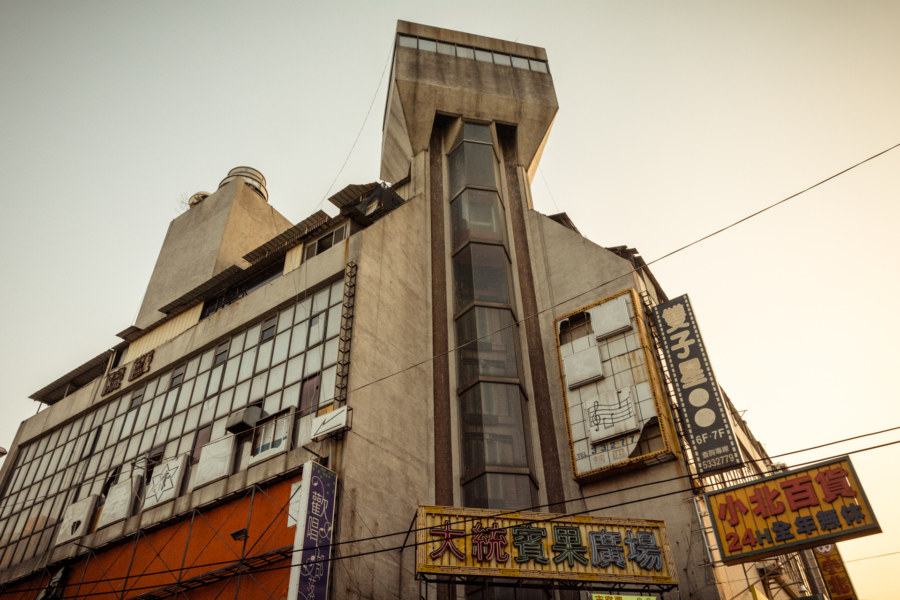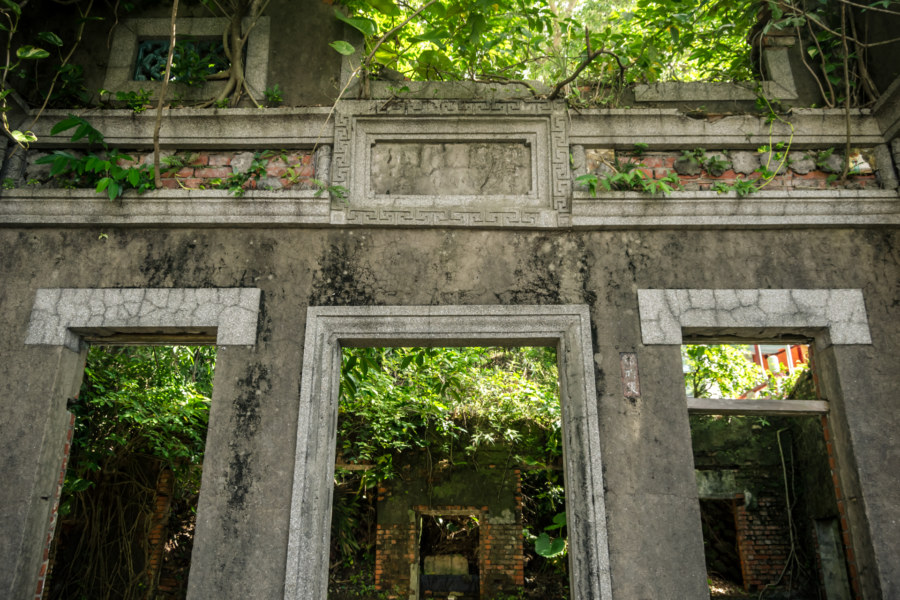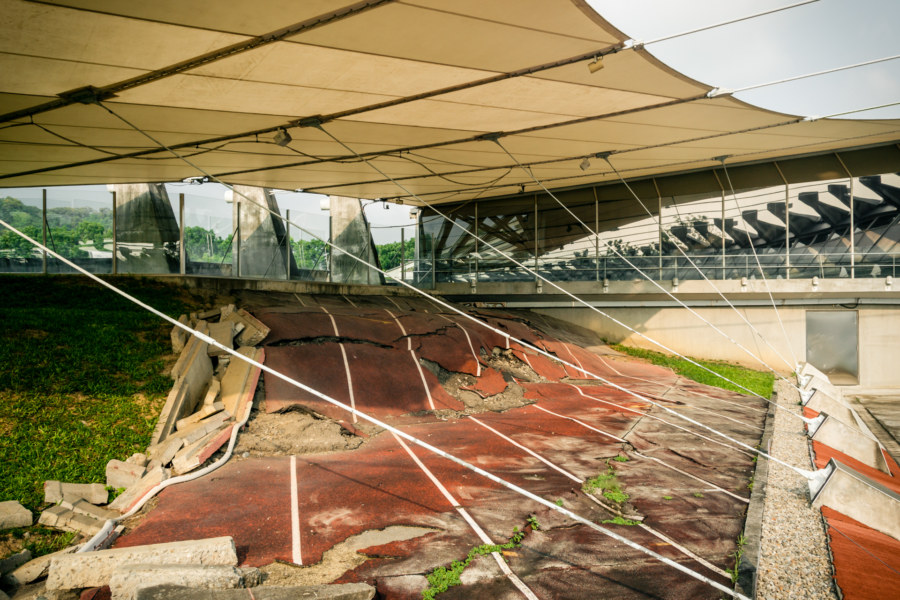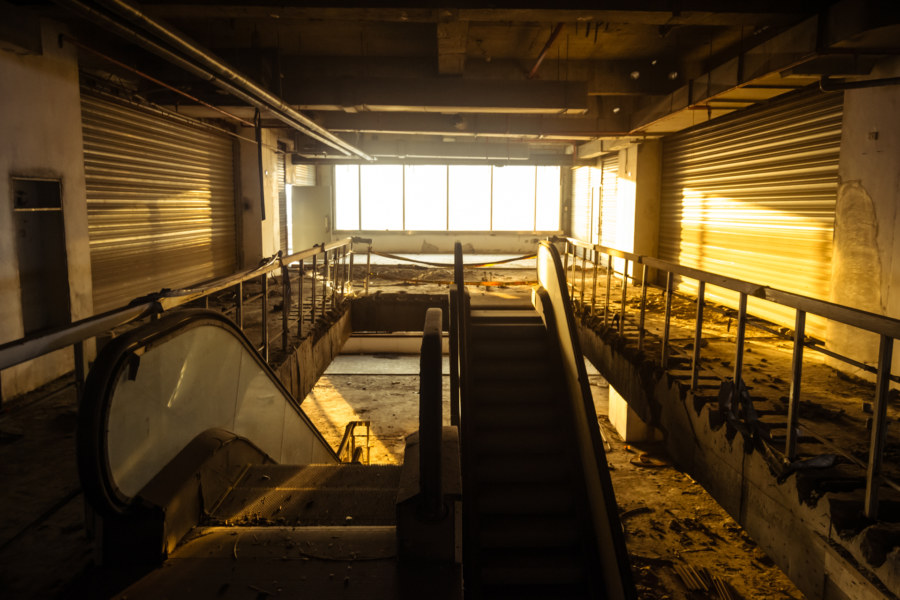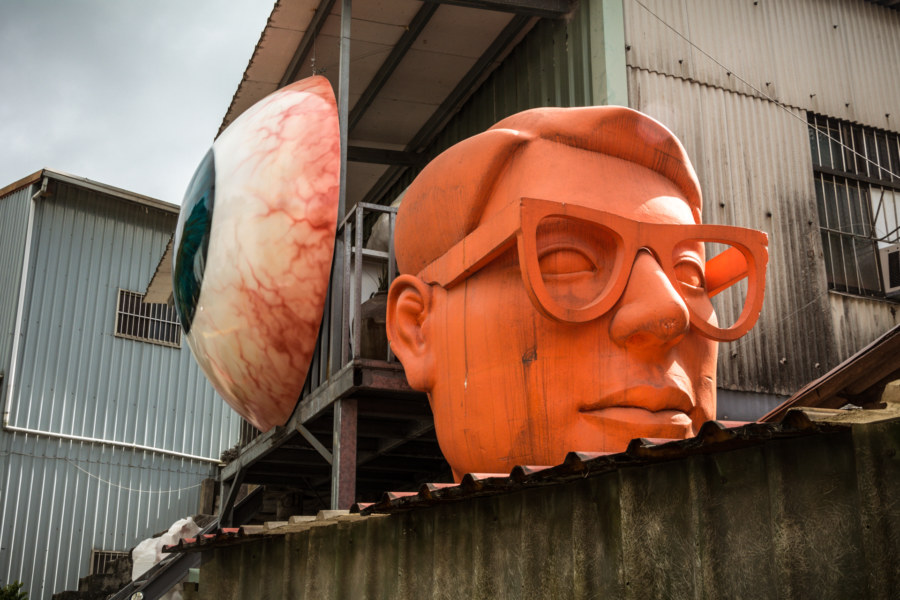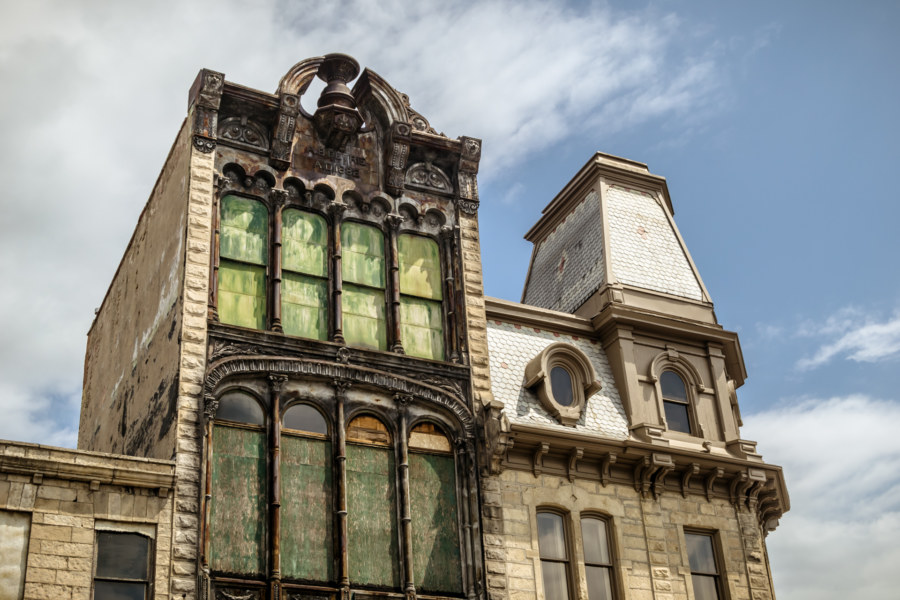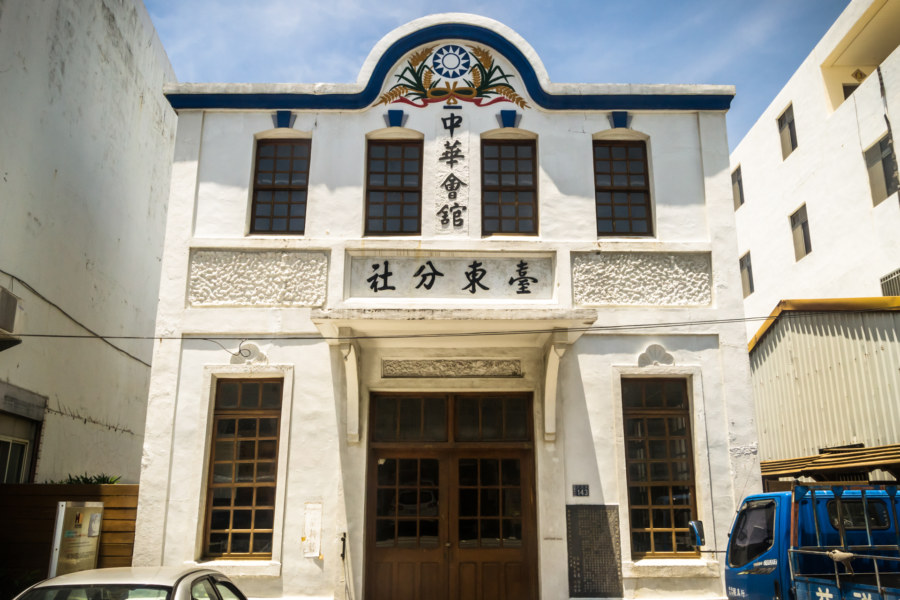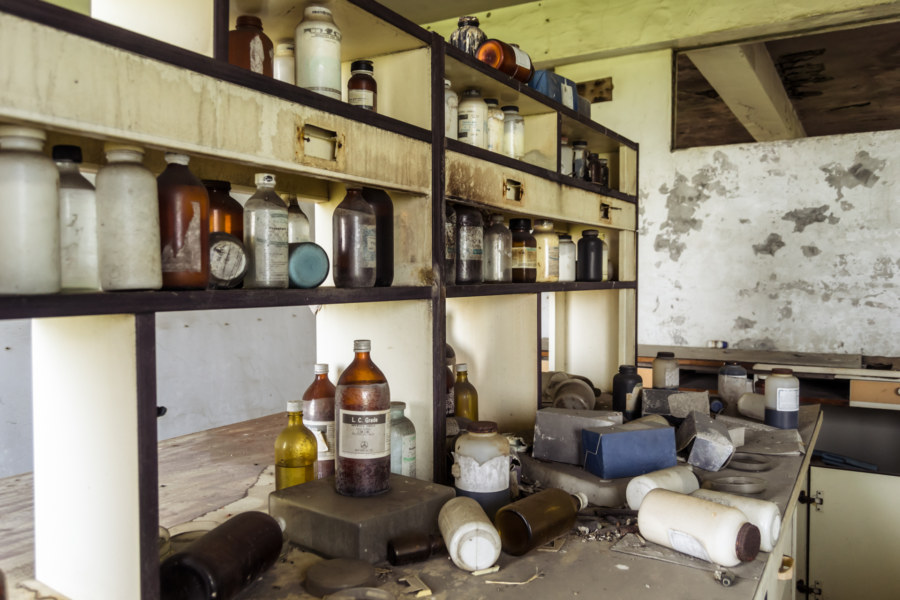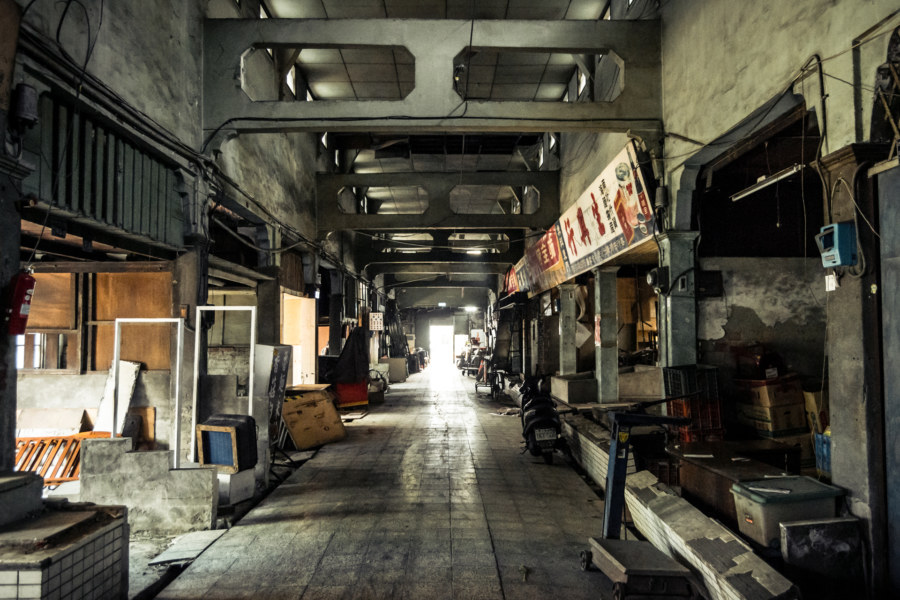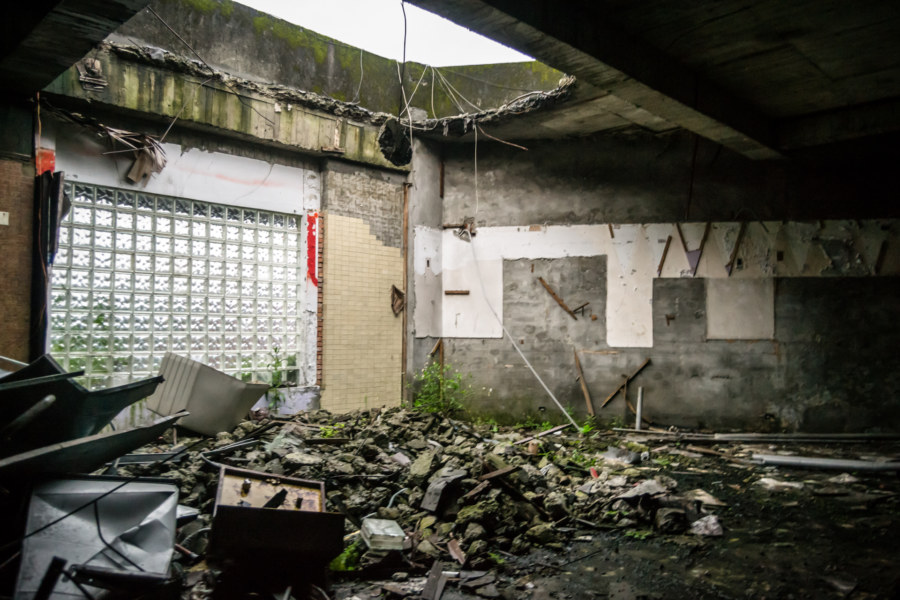While living down in Changhua City last winter I made occasional forays up and down the TRA Western Line 西部幹線 to scope out places not commonly written about in English. One such place is Douliu, the administrative seat of Yunlin, which hardly earns more than a passing mention in the English language blogosphere. It was a worthwhile trip too—apart from the famous Tàipíng Old Street 太平老街 and the surprisingly large and lively Douliu Night Market 斗六夜市 I also chanced upon another abandoned entertainment complex, the Dòuliùmén Building 斗六門大樓, named after an archaic term for the city dating back to the 17th century. This building was also once home to the Shuāngzǐxīng or Gemini Theater 雙子星戲院.
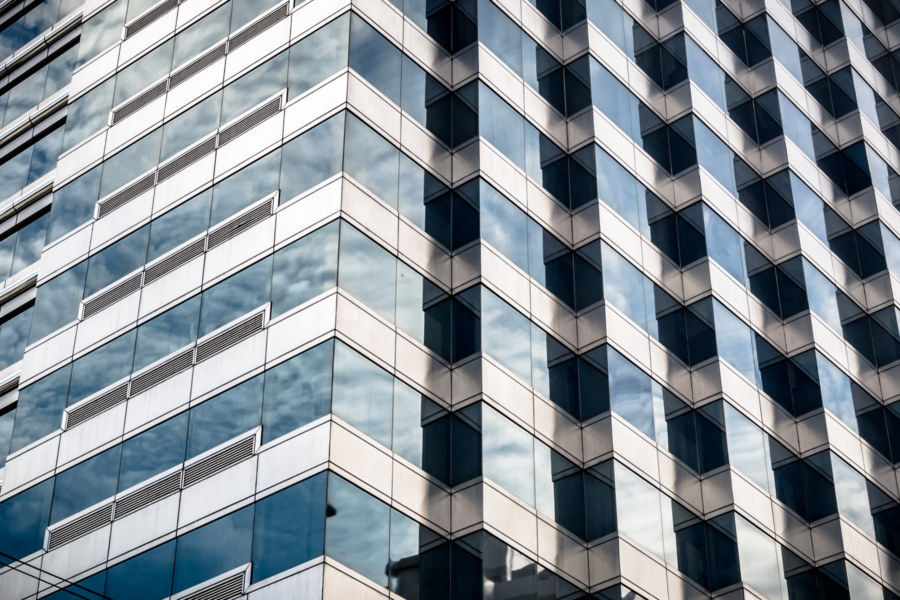
Structures fit for habitation and use. See also: urbanism, commercial, industrial, residential.
Subterms
Adjacent Terms
Khoo Tsu-song Old House 許梓桑古厝
Khóo Tsú-song Old House 許梓桑古厝 is a scenic historic site atop a modest hill near Miaokou Night Market 廟口夜市 in Keelung. Built in 1931 while Taiwan was under Japanese rule, it is structured somewhat like a traditional Taiwanese three-sided courtyard home with some Western influences and building materials. Formally named Qìngyú Hall 慶餘堂, it was the residence of Khóo Tsú-song (1874–1945), an important figure in local politics and civic affairs during the Japanese colonial era. His name is rendered here in romanized Taiwanese Hokkien, in keeping with the conventions adopted by the Keelung cultural bureau.
921 Earthquake Museum 九二一地震教育園區
Deep in the night on September 21st, 1999, the devastating 921 Earthquake ripped through central Taiwan. Thousands were killed, hundreds of buildings collapsed, and entire towns were leveled to the ground, particularly in Nantou and Taichung. Nowadays there are many reminders and memorials to the disaster scattered across the region, among them the 921 Earthquake Museum 九二一地震教育園區 (Chinese version; official site) in Wufeng, which I visited in June 2014.
Fuyou Building 富有大樓
At the end of a bicycle trip to Taitung City in the spring of 2015 I went wandering near the old train station, which had been transformed into the Taitung Railway Art Village 台東鐵道藝術村 in 2004. I had a hunch I might find some hulking derelict near former station front, perhaps an entertainment complex or shopping center in terminal decline, for the new Taitung Station is located far outside the downtown core. Sure enough, within minutes I noticed the telltale signs of decay on a large commercial building several streets over from the art village. This turned out to be the Fùyǒu Building 富有大樓, a genuine mosquito museum 蚊子館 built in the early 1990s under shady circumstances. It was later abandoned and has since become an eyesore and public health menace as well as a political hot potato for local officials.
Eye on the Road
It is hard not to notice the giant freaking eyeball and neon orange head hanging out at the side of the road leading up Hōnglúsāi Mountain 烘爐塞山 at the southern edge of Zhonghe, Taiwan. After taking in the scene I jokingly came up with a new slogan for the tourist bureau; “Taiwan: don’t ask why!” But of course that’s not really my style—I always like getting to the bottom of the seemingly inexplicable things I encounter in my travels here.
Impressions of Historic Guelph
Taitung Chinese Association 台東中華會館
The historic Chinese Association on Zhongzheng Road in Taitung City.
It never ceases to amaze me what can be learned from keenly observing the streets of Taiwan and following up with a little research online. I only spent one full day in Taitung City at the tail end of a bicycle trip down south this June but managed to chance across a number of interesting sights in that time, this historic building among them.
Located at 143 Zhongzheng Road 中正路, this is the Taitung Branch 台東分社 of the Chinese Association 中華會館, originally built in 1927 while Taiwan was under Japanese rule. A plaque out front features historic information in English (shocking in this part of the country) as well as a direct translation of the name, “Taitung Chunghua Hostel”, but it was more of a clubhouse or assembly hall, not a place to secure lodging for the night. Interestingly, the proper Chinese name is the same one used by the Chinese Consolidated Benevolent Association of America. Have a look at the photos…
Peiyuan Industrial Aquaculture Factory 培源殖產工廠
Bicycle touring is one means by which I discover many abandoned places in Taiwan. Ride in just about any direction long enough, keep your eyes peeled, and you’re bound to encounter the telltale signs of decay and neglect sooner or later. Such was the case one fine morning in June 2015 when I set out to have breakfast in Fangliao, a small town along the coast of central Pingtung, while en route to Hengchun, at the southern tip of the island. I had barely been awake for half an hour when I noticed this partially overgrown ruin along the roadside.
Tainan West Market 台南西市場
West Market 西市場 is a historical site in downtown Tainan dating back to the earliest years of the Japanese colonial era. The first market building at this location was constructed in 1905, back when it fronted onto the milkfish farms of the Táijiāng Lagoon 台江內海. It suffered extensive damage when a catastrophic typhoon struck Tainan in August 1911. An expanded L-shaped structure was built in 1912, making it the largest market in southern Taiwan, but this was damaged by another typhoon in 1920, leading to another round of reconstruction, the results of which are still standing today. The old marketplace remains a hub of commercial activity in this part of the city—but many of its stalls were neglected or abandoned by the mid-2010s, when many of the photos in this article were captured. Presently the old market enjoys heritage status—and an extensive restoration effort was completed in 2020, transforming it into a bright and airy space.
Tongyi Bowling Alley 統一保齡球館
Keelung, like many cities in Taiwan, is a dark wonderland for urban exploration. You can hardly turn around without sighting yet another hulking ruin calling out to be entered. Most of these buildings are so decrepit that little remains to indicate what its purpose once was—a direct consequence of Keelung’s incessant rain and gloom. The process of decay works at a feverish pace in this grim port city, rapidly eroding evidence of human occupation in any abandonment exposed to the elements.
